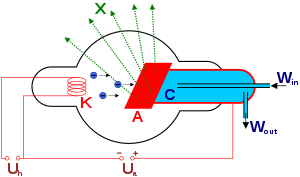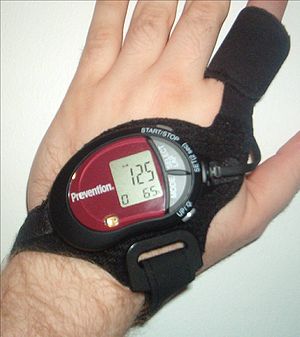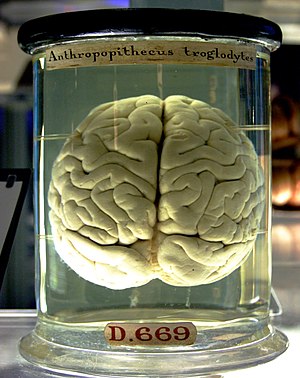I WAS JUST GETTING BORED BY BIOMEDICAL PROJECTS SO I THOUGHT I SHOULD PUT ONE FUN PROJECT HERE
IT IS AN EASY PROJECT TO MAKE MOREOVER IT WILL TEST YOUR CIRCUIT ASSEMBLY SKILLS AND HELP YOU BECOME A GOOD CIRCUIT DESIGNER
DESCRIPTION
The trick works as follows: a wand (with a magnet mounted in one end) must pass in a 1-2-3 sequence over reed switches S4 to S6 before the bulb LP1 will light. If the wand passes over reed switches S1, S2, or S3, the 1-2-3 sequence will be reset (that is, cancelled). Or, if the bulb is already burning, the activation of reed switches S1, S2, or S3 will extinguish it.
All the reed switches - S1 to S6 - are glued just beneath the surface of a 10 cm² box (Figure 2). A general purpose adhesive is suggested, so that the reed switches may later be moved if necessary. The bulb, LP1, is mounted in the centre of the box. A small PP3 9V battery may be used. The prototype box was built using balsa wood.
The wand may be waved back and forth in various motions over the box, on condition that it finally passes in the correct 1-2-3 sequence over S4 to S6 (at which point LP1 will light). This should thoroughly confuse any onlooker and make it virtually impossible for another person to repeat the correct motions with the same wand. The wand may also be lifted just high enough over reed switches S1 to S3 so as not to trigger them.
A 7.2V filament bulb, LP1, was used - instead of, say, a LED - so as not to give the trick an "electronic" appearance. The operation of the circuit is fairly simple. Three AND logic gates of a 4081 CMOS IC are employed, with gates IC1a to IC1c beingconfigured as a standard cascaded latch circuit. S1 to S3 serve as reset switches. The output at pin 10 will only switch to logic high when reed switches S4 to S6 are closed in sequence. Power transistor TR1 amplifies the output current to light bulb LP1.
Instead of a wand, a small neobdymium (super-strength) magnet may be stuck to one finger, and one's finger used in place of the wand.
In "stand-by" mode (with the bulb extinguished) the circuit will use very little current. Therefore a switch is not included in the circuit (of course, one may be added). The box may be opened and the battery simply clipped on or off.
CIRCUIT DIAGRAM



![Reblog this post [with Zemanta]](http://img.zemanta.com/reblog_e.png?x-id=1a1b171e-1562-4b61-9478-b03e17eb2279)















![Reblog this post [with Zemanta]](http://img.zemanta.com/reblog_e.png?x-id=dfb75e2e-5023-472a-b4d6-5a317eeca7e8)





![Reblog this post [with Zemanta]](http://img.zemanta.com/reblog_a.png?x-id=f6d3b245-1265-4564-8e7a-c263e0a3ad01)

![Reblog this post [with Zemanta]](http://img.zemanta.com/reblog_e.png?x-id=ba26d57b-29be-48f6-8032-830f09a8a312)

![Reblog this post [with Zemanta]](http://img.zemanta.com/reblog_e.png?x-id=f95201c5-51ca-495c-a1ad-37b946efa8da)


![Reblog this post [with Zemanta]](http://img.zemanta.com/reblog_e.png?x-id=7fc63a5f-eae3-4d92-b146-099412bf24f5)

 d here allows these transmitters to be interfaced to a small
d here allows these transmitters to be interfaced to a small 


![Reblog this post [with Zemanta]](http://img.zemanta.com/reblog_e.png?x-id=e167da6f-7697-4bf7-811e-b7ab7d1a7613)

![Reblog this post [with Zemanta]](http://img.zemanta.com/reblog_e.png?x-id=95125620-0b2c-41af-94fc-240d343dfdd1)
![Reblog this post [with Zemanta]](http://img.zemanta.com/reblog_e.png?x-id=ba434914-3edd-4f5b-96e7-81fd37632989)

![Reblog this post [with Zemanta]](http://img.zemanta.com/reblog_e.png?x-id=ddbe4600-e5f0-40c2-8cc9-b92f628a37c5)

![Reblog this post [with Zemanta]](http://img.zemanta.com/reblog_e.png?x-id=8e90e753-4fe0-42b3-8141-318ed983c207)

